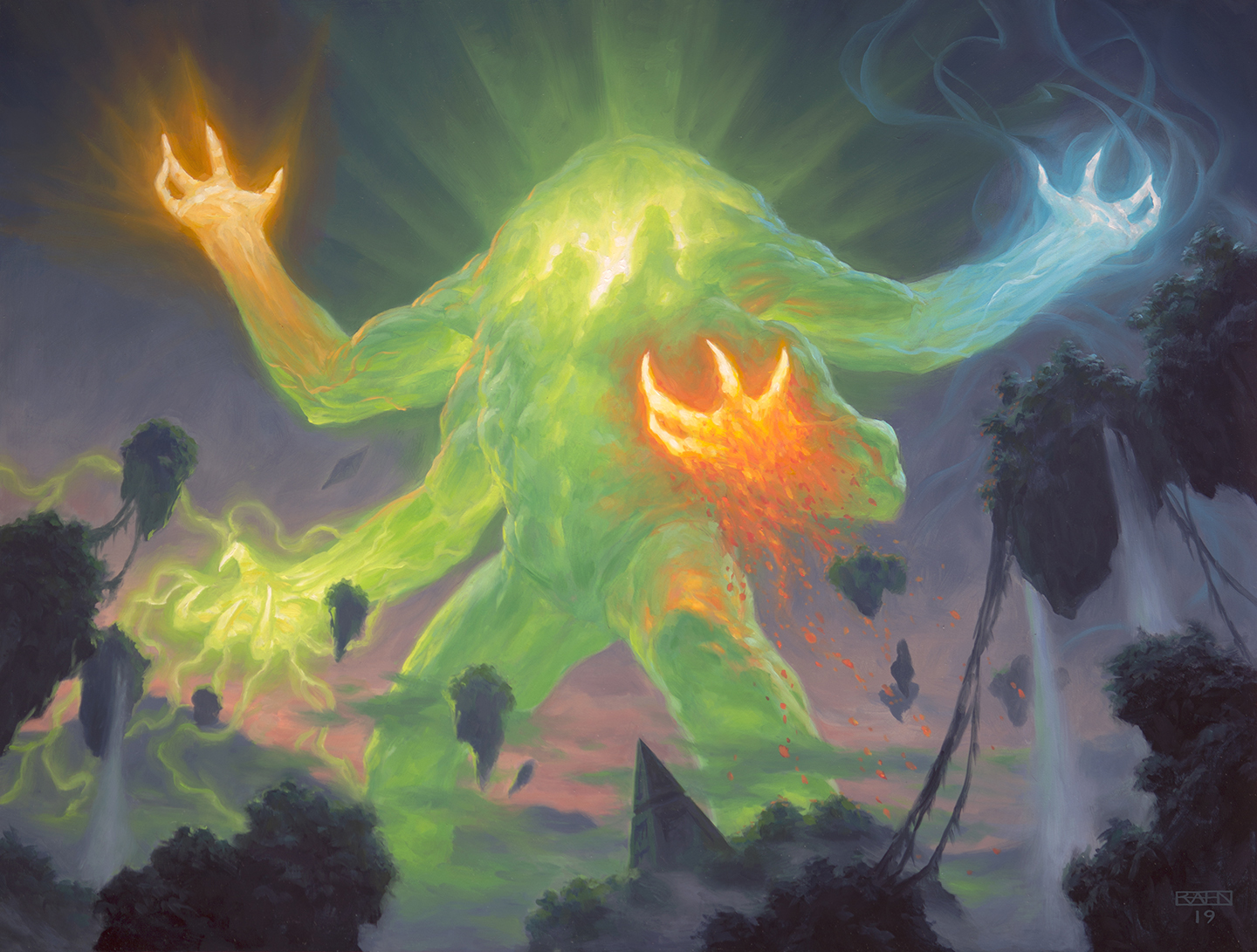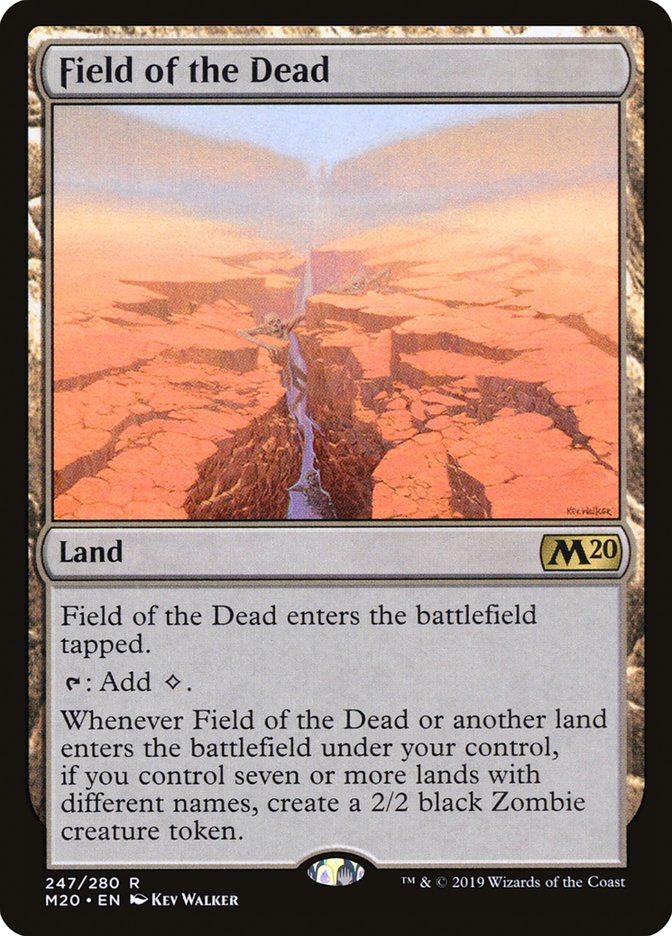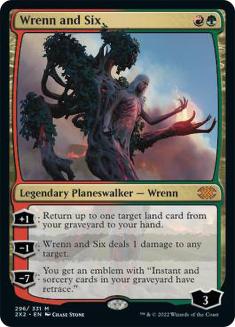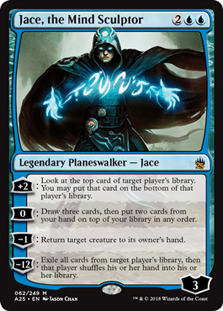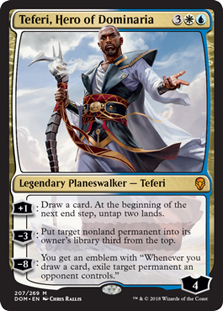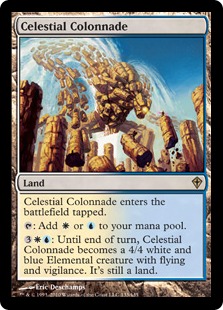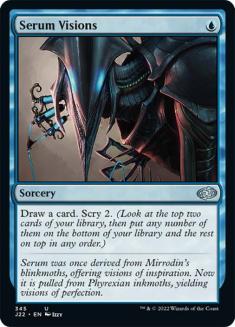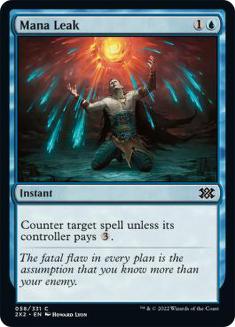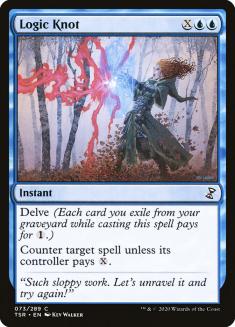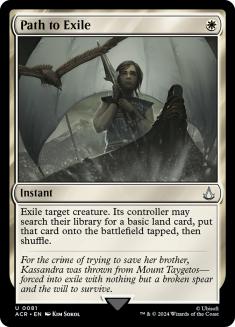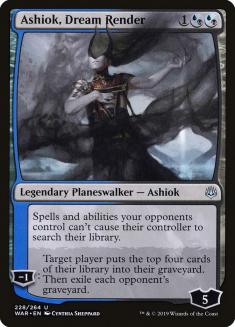Omnath, Locus of Creation is a problem that each competitive format has had to face. When Omnath was initially previewed, it took the community a moment to realize the mayhem that it was about to bring. Four-color commitments usually do not pan out well in competitive play; however, Wizards of the Coast (WotC) found a way to break that stigma wide open. Not only does Omnath contend for one of the most powerful creatures recently printed, I would argue that an all-time championship belt may soon be awarded.
Uro, Titan of Nature’s Wrath is problematic for many reasons and has a level of resiliency that Omnath does not have. Even though there are far more copies of the Simic Elder Giant in older formats, the effect of the four-color threat is more potent. Anyone can beat a Uro with well-timed removal and a little luck, even if it gets a few triggers off. When Omnath enters the battlefield, a fetchland is used that was waiting that turn, and then another fetchland follows up, the game often ends immediately for the opponent. All that was required for this to occur is some correct game sequencing and a format with the appropriate manabase to make it all happen.
Not only does Uro-Omnath have all the fetchlands it would ever need in Modern, the manabase is full of punishing utility as well. Field of the Dead, Field of Ruin, and Mystic Sanctuary all combine to make gameplay horrific for the opponent. Even with all the colorless lands and a four-color requirement, fetchlands make the manabase work with ease. This many colors being utilized is usually kept in check with the damage caused by shocklands; however, we all know what these two creatures do for the life total of the controller. The massive lifegain attached makes for smooth sailing, with little to no punishment for bringing multiple shocklands onto the battlefield untapped.
With the creatures being this powerful and efficient, and Field of the Dead being a free win condition, control and ramp are the obvious foundation options. I tend to lean toward control, but not for the usual biased reasons. The format now has an Oops All Spells deck running around, along with the usual combo suspects, making a generic Four-Color Ramp strategy a foolish choice. Disruption must be present, in full force, to buy the time to establish a winning battlefield. This is where I saw most competitive Magic players heading last week and here is another strong finish this past weekend.
Creatures (6)
Planeswalkers (7)
Lands (29)
Spells (18)

There are a lot of things I love about this list and very few changes that I have made since seeing it. My take on Four-Color Control had many of the same heavy hitters, with just a few modifications. I want to talk about what I really liked in this metagame in detail, and then discuss what was changed to make the deck stronger against the field.
Wrenn and Six is the clear winner of the Omnath, Locus of Creation printing. This is a dominant two-mana planeswalker that was robbed of the spotlight when banned in Legacy. Its interaction with Wasteland was too strong for the format to handle and its application in Modern was spotty at best. Wrenn and Six, even without a busted lock, is a card advantage machine when put into the right deck.
A deck like Four-Color Control depends on land drops when fueling Omnath, Uro, Growth Spiral, and Field of the Dead. Each one of these cards gets exponentially stronger as Wrenn and Six does its thing, not to mention the generic strength of a planeswalker like this in a control deck. Even without the land-specific permanents, control is all about hitting its land drops. A single fetchland does the trick with Wrenn and Six, in addition to the Field of Ruin and Triomes that can provide additional advantage. Playing a deck with 29 land feels great for the control mage, especially when most of the spells being used take full advantage of that number.
The others planeswalkers in this Four-Color Control deck are members of the unofficial Planeswalker Hall of Fame that I created in my head. Each one of these monsters brings destruction to their opponents through card and battlefield advantage in each format they have access to. In Modern, opponents are still terrified to see a Teferi, Hero of Dominaria resolve on a relatively safe battlefield, knowing exactly what it can do. The proactive strategy of tapping out for planeswalkers is a gameplan that a deck like this must lean on.
Modern players love having a reactive control deck, but that is not what Omnath calls for. Using every piece of this Elemental is what makes it a broken Magic card, especially the free mana produced with the second trigger. Reactive control decks have an issue summoning their spells in conjunction with the second land drop; however, proactive control players easily apply pressure onto the battlefield with it. The mana advantage is nearly enough to cast each threat in the deck, as well as have a little left over for disruption to defend the house. This gameplay is superior in a format like Modern, where speed and power rule the competitive world. Having the ability to apply pressure with planeswalkers, lands, and creatures, while defending with blue disruption, is something unique to Four-Color Control.
The planeswalkers, creatures, and manabase of this deck stretch the boundaries of traditional fair play. Control decks in Modern have always been described as fair, usually meant in an insulting way. Underpowered would be a more accurate description, barely scraping by with the mediocre disruption and card advantage that was left behind by most decks, while the rest of the metagame would relish their explosive draws. That dynamic is over with the introduction of Omnath and Uro. In this control deck, the card advantage and pressure are amplified tenfold, making the deck feel much closer to one of the unfair archetypes.
I had very few issues with this version of Four-Color Control. The areas of weakness were in the disruption column, with a focus on Lightning Bolt and Mana Leak. Lightning Bolt has been one of the most controversial removal spells for control decks throughout its history in Modern. When cards like Dark Confidant and Noble Hierarch are running around, Path to Exile needs a little bit of assistance in that column. Those days are long gone, and although there are some early-game creatures that are eviscerated by three damage, the downside for Lightning Bolt in Four-Color Control is too great.
Even though the life loss from shocklands is mostly offset by the lifegain of the creatures, landing a Lightning Bolt on Turn 1 is not what I want to do with Four-Color Control. Path to Exile has been carrying the spot removal burden in Modern for a long time and has done a great job all by itself. This has been with the future help of a sweeper, which this version had none of in the maindeck. The fix was an easy one, moving out two Lightning Bolt for two Supreme Verdict, and the result has been amazing. Aggro decks already had a hard time against the lands and creatures of Four-Color Control, but sweepers became the nail in the coffin on many occasions. Lightning Bolt has some effectiveness against planeswalkers, hits a couple of creatures, but has nowhere near the range that Supreme Verdict has. Even Force of Negation roots for control players to maindeck the blue sweeper for exile reasons, making this an easy swap.
Mana Leak is next on the list of cards that have been very good or very bad in Modern’s history. When the format is as fast as it is now, Mana Leak is serviceable. There are too many decks that will punish you with early-game creatures, but other decks cast expensive threats very early in the game that need to be countered. This is where Mana Leak has shined, but its time is running out. As Omnath and Uro continue to grow in popularity, the conditional removal will continue to get worse. This is where I bring in my old ally, one of the most trustworthy two-mana counterspells I have played over the years.
Logic Knot is a card that I have used since the beginning of Modern, even though it resulted in a high level of heckling from my peers. Luckily, this counterspell survived the test of time and has become a staple for control decks in Modern over the last few years. The double-blue mana requirement would be a bit concerning in a four-color deck; however, you may notice there are three wonderful copies of Cryptic Command waiting to be cast as early as Turn 3.
The manabase for this deck looks wild, but it works. Logic Knot has come through in the clutch on multiple occasions, only being a bit sketchy on the turns where multiple spells are needed. Even then, it all comes down to proper sequencing and understanding the manabase. It’s vital to play every land drop correctly and make sure you are setting yourself up for strong multiple-spell turns early in the game.
I cut one Mana Leak, as well as one Growth Spiral, to get the additional disruption in. With those changes, this is what my list looks like in comparison.
Creatures (6)
Planeswalkers (7)
Lands (29)
Spells (18)

My version of Four-Color Control capitalizes on the strengths of the decks before it, while addressing the growing combo nature of the metagame. With Four-Color Copy Cat, Oops All Spells, Amulet Titan, Mono-Green Tron, NeoBrand, and whatever combo/big mana deck someone will whip up tomorrow, control must be ready. This requires the deck to shave a few spells that provide battlefield consistency for blue disruption, preventing these decks from having free rein to combo out in the early-game.
The main reason why Four-Color Control, with these modifications, is favored against these combo decks is their fragility. The combos themselves are easily broken up and the remainders of most of these decks are easy to beat with the powerful in-house elements of Four-Color Control. In a perfect world, I would add some more planeswalkers to this deck, consistently having one to drop in the early-game. That reality will likely never return to Modern, so we must make do. The tap-out elements are here to take full advantage of Omnath, as well as their natural strength after resolution. The only caveat is they cannot be the source of disruption. Assistance is required by the countermagic you see here, joined by the removal strength of Path to Exile and Supreme Verdict.
The sideboard is close to the previous list’s for good reason. Previous owners of Four-Color Control have crafted a strong spread to offer answers against every deck in the format. The only thing I did was add the second Mana Leak to the sideboard and get another Ashiok, Dream Render in there. Outside of those changes, the sideboard has worked very well for me if the metagame is cluttered with combo, big-mana, and graveyard decks. Even with the resurgence of Humans, there’s no need to alter the decklist. The matchup Four-Color Control has against traditional aggro is absurdly good, especially with the inclusion of Supreme Verdict to the maindeck.
Overall, Four-Color Control is one of the top decks of Modern moving forward. I’m sorry, Celestial Colonnade, but if these creatures continue to produce more card advantage than my precious blue spells, my loyalty is with them.

